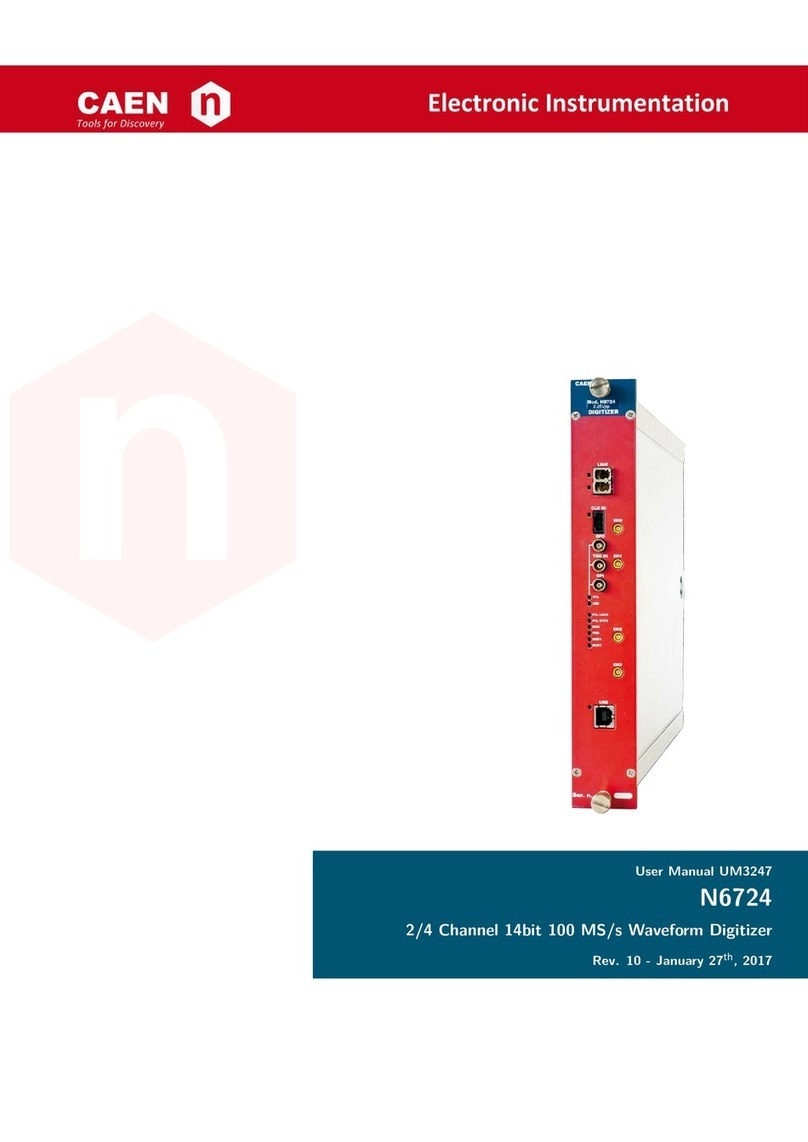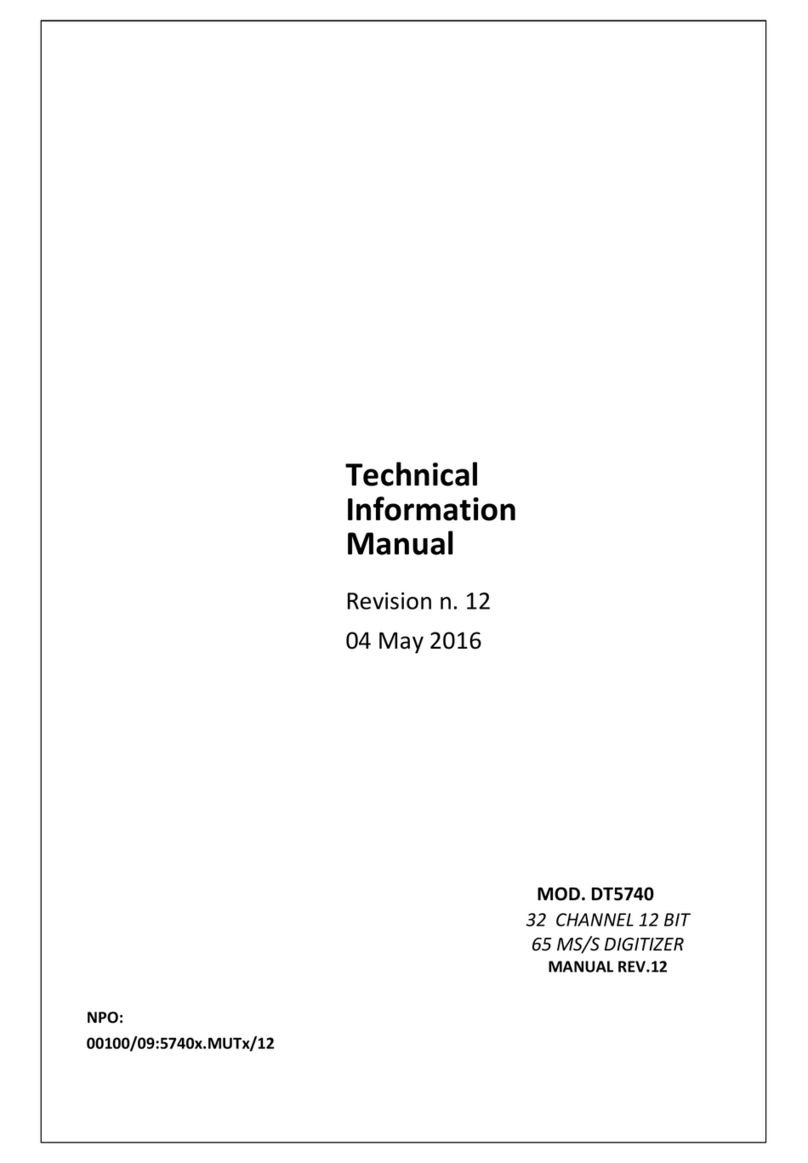
Document type: Title: Revision date: Revision:
User's Manual (MUT) Mod. V1724 8 Channel 14bit - 100MS/s Digitizer 06/11/2007 7
NPO: Filename: Number of pages: Page:
00103/05:V1724x.MUTx/07 V1724_REV7.DOC 63 4
3.4. ZERO SUPPRESSION ................................................................................................................................25
3.4.1. Zero Suppression Algorithm..........................................................................................................25
3.4.1.1. Full Suppression based on the integral of the signal..................................................................................25
3.4.1.2. Full Suppression based on the amplitude of the signal..............................................................................25
3.4.1.3. Zero Length Encoding ZLE.......................................................................................................................25
3.5. TRIGGER MANAGEMENT.........................................................................................................................30
3.5.1. External trigger .............................................................................................................................30
3.5.2. Software trigger.............................................................................................................................30
3.5.3. Local channel auto-trigger............................................................................................................31
3.5.4. Trigger distribution .......................................................................................................................31
3.6. FRONT PANEL I/OS.................................................................................................................................31
3.7. ANALOG MONITOR.................................................................................................................................32
3.7.1. Trigger Majority Mode (Monitor Mode = 0).................................................................................32
3.7.2. Test Mode (Monitor Mode = 1).....................................................................................................33
3.7.3. Analog Monitor/Inspection Mode (Monitor Mode = 2) ................................................................33
3.7.3.1. Procedure to enable “Analog Monitor” mode ...........................................................................................34
3.7.3.2. Applications examples ..............................................................................................................................34
3.7.4. Buffer Occupancy Mode (Monitor Mode = 3)...............................................................................35
3.7.5. Voltage Level Mode (Monitor Mode = 4)......................................................................................35
3.8. TEST PATTERN GENERATOR....................................................................................................................36
3.9. RESET,CLEAR AND DEFAULT CONFIGURATION.....................................................................................36
3.9.1. Global Reset ..................................................................................................................................36
3.9.2. Memory Reset................................................................................................................................36
3.9.3. Timer Reset....................................................................................................................................36
3.10. VMEBUS INTERFACE .........................................................................................................................36
3.10.1. Addressing capabilities..................................................................................................................36
3.10.1.1. Base address..........................................................................................................................................36
3.10.1.2. CR/CSR address ...................................................................................................................................37
3.10.1.3. Address relocation ................................................................................................................................37
3.11. DATA TRANSFER CAPABILITIES ..........................................................................................................38
3.12. EVENTS READOUT ..............................................................................................................................38
3.12.1. Sequential readout.........................................................................................................................38
3.12.1.1. SINGLE D32 ........................................................................................................................................38
3.12.1.2. BLOCK TRANSFER D32/D64, 2eVME .............................................................................................38
3.12.1.3. CHAINED BLOCK TRANSFER D32/D64.........................................................................................39
3.12.2. Random readout (to be implemented)............................................................................................39
3.12.3. Event Polling.................................................................................................................................40
3.13. OPTICAL LINK ....................................................................................................................................40
3.13.1. CAENVME_Init.............................................................................................................................41
3.13.2. CAENVME_End ............................................................................................................................41
3.13.3. CAENVME_ReadCycle .................................................................................................................42
3.13.4. CAENVME_WriteCycle.................................................................................................................42
3.13.5. CAENVME_MultiRead..................................................................................................................42
3.13.6. CAENVME_MultiWrite .................................................................................................................43
3.13.7. CAENVME_BLTReadCycle...........................................................................................................43































